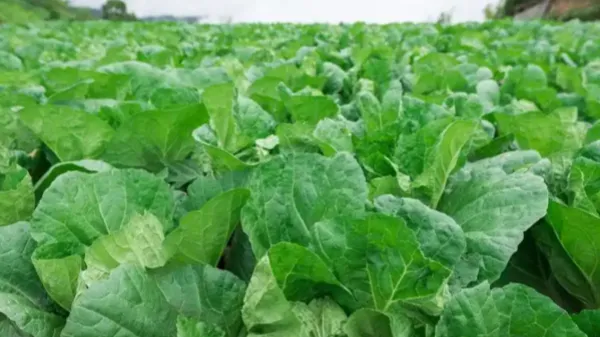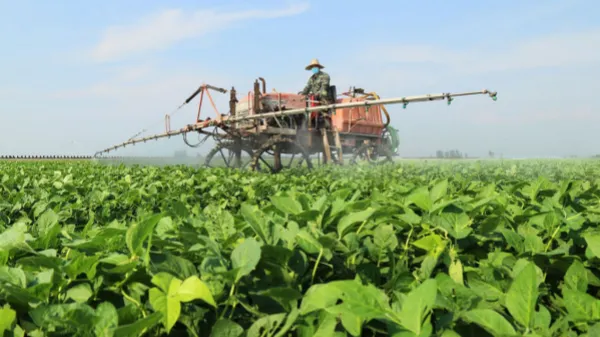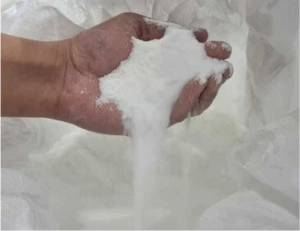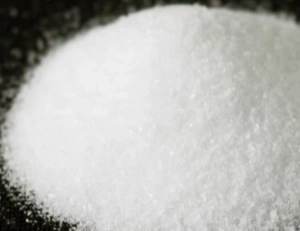The power of MKP fertilizer in foliar applications to improve crop yield and quality explains its popularity for open-field, orchard and protected crops.
Supplying plants with adequate nutrition is essential for optimum crop performance, and foliar fertilization is now a well-established method of delivering plant nutrients in open-field, orchard, and controlled cropping environments. While many foliar fertilizers include nitrogen, the value of a nitrogen-free foliar application, such as a high-quality MKP (monopotassium phosphate) water-soluble fertilizer, should not be underestimated.

What is MKP fertilizer?
Monopotassium phosphate (MKP) fertilizer is a fully water-soluble potassium and phosphorus (PK) fertilizer that contains 52% P2O5 and 34% K2O. Because MKP fertilizer consists entirely of these plant nutrients, it is a high-purity fertilizer.
The phosphorus (P) and potassium (K) in MKP fertilizers are in forms (K+ and H2PO4–) that are available for rapid uptake by plants. MKP is also sodium- and chloride-free and is free of all harmful elements. Consisting only of P and K, and without nitrogen (N), MKP fertilizer allows growers to use other products to independently balance and control the nitrogen supply.
The white crystalline MKP granules have a relatively high solubility, so are quick to dissolve, creating a clear solution. Physically, it is non-hygroscopic and free-flowing and does not cake, making it easy to store, handle, and apply.
Among common fertilizers, MKP has the lowest salt index, making it an exceptionally safe foliar fertilizer with minimal risk of leaf burn or phytotoxicity. The MKP spray solution is buffered at pH 5 ± 0.5, which creates optimum conditions for the assimilation of P, K, and other nutrients.
These high-quality characteristics make MKP ideal for use in fertigation, hydroponics, and foliar applications.
Chemical formula KH2PO4
Phosphorus (P2O5) 52%
Potassium (K2O) 34%
pH (1% aq. solution) 4.5
EC (1 g/L) 0.7 mS/cm
Solubility (20°C) 226 g/L
Economic choice for nitrogen-free foliar fertilization
Supplying plants with adequate nutrition is essential to maintain their health and performance, and foliar fertilization is a well-established method of delivering the nutrients plants require. Foliar fertilization is the application of soluble fertilizer to the foliage of crop plants in the form of a diluted aqueous spray. Plants take up the nutrients in ionic form directly through the leaves and other organs.
While urea is the most commonly used nitrogen foliar fertilizer, and potassium nitrate is known to be a good choice for potassium foliar applications, both of these contain nitrogen, which may be undesirable at specific growth stages or phases. Using MKP, an economical and readily available fertilizer, delivers phosphorus and potassium quickly and independently of nitrogen, making it an excellent choice for foliar applications.
Foliar P application
After nitrogen, phosphorus (P) is the second most limiting nutrient in crop production. While the amount of P in the soil is greater than plants require, most of the phosphorus is fixed in insoluble compounds and not available to plants. Foliar application of phosphorus overcomes the problems regarding the behavior of phosphorus in soils that often result in low P use efficiency. Foliar P application can supplement plant P requirements when phosphorus is most needed, regardless of its availability in the soil.

Phosphate is not replaceable with phosphite
In the fertilizer and plant protection market, phosphite, derived from phosphorous acid (H3PO3), should not be confused with phosphate, derived from phosphoric acid (H3PO4). Phosphates are compounds of the element phosphorus (P) which is an essential plant nutrient, as mentioned above, while phosphite is a plant protection product known for its fungicide effect against Phytophthora.
The similarity in the names can lead to misunderstanding, but phosphite cannot be used as a source of P nutrition by plants and actually has a negative effect on the growth and metabolism of P-deficient plants.
When foliar P application is needed as part of the nutritional program, phosphates are the correct P source, and among phosphates, MKP is the reliable choice for foliar P application in a wide range of situations due to its easy handling, high quality, value, and quick action as described above.
Global consumption of MKP
Around 300,000 tons of MKP are consumed globally (excluding China) every year. Approximately half is used for foliar application, while the other half is used in the soilless market as a raw material for water-soluble and liquid fertilizer. The wide range of crops MKP can be used on demonstrates its versatility as a foliar fertilizer. Over recent decades this has grown to include field crops such as wheat, maize, rice, potato, soybean, and sugar beet, and fruit crops such as citrus, grapevines, apple, pear, nectarine, and mango.
Proven efficacy in field trials
Research trials conducted in multiple countries show the potential to increase yields with foliar sprays of MKP. In open-field crops such as maize, wheat, and sugar beet, MKP foliar applications increase yields and phosphorus uptake and improve phosphorus use efficiency (PUE).
Nectarine, mango, and grapevine field experiments indicate the significant role foliar MPK has in powdery mildew disease control while also correcting P and K deficiencies and increasing fruit size.
In citrus orchards, trials demonstrate how foliar MKP application enhances multiple fruit quality characteristics, including increased fruit size, improved rind color, reduced peel thickness, less splitting and creasing, improved smoothness, more juice, less acidity, and an increased sugar:acid ratio, demonstrating the multiple benefits MKP fertilizers have on fruit quality.
Industrialized mass production of MKP
Research into foliar phosphorus fertilization started in the late 1940s and early 1950s and was limited to use for high-value horticultural crops. The focus was on these high-value crops as MKP was an expensive fertilizer until mass production in the early 1990s.
MKP production utilizes the wet process. Manufactures process sulfuric acid, green phosphoric acid, white phosphoric acid, superphosphate, and granular fertilizer, utilizing neighboring phosphate rock deposits. MKP producing uses the innovative and proprietary process, which ensures the highest quality while achieving a lower carbon footprint than equivalent products.


High quality, low carbon footprint
MKP fertilizer is an excellent choice for delivering potassium and phosphorus to a wide range of open-field, orchard, and protected crops through foliar application.



